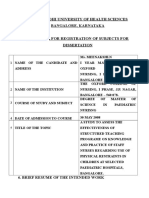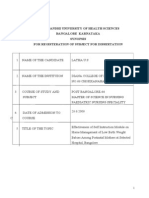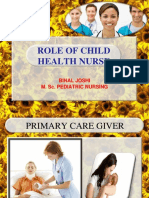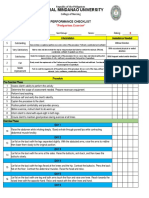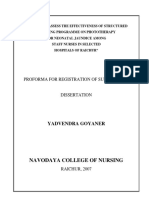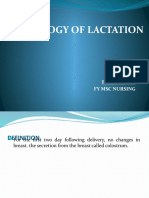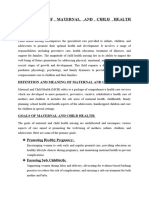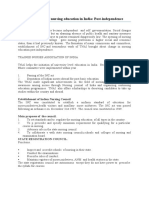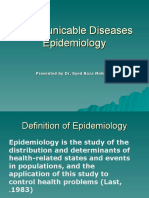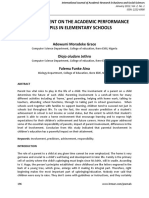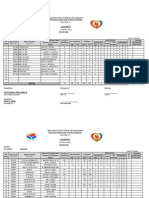0% found this document useful (0 votes)
376 views4 pagesIntroduction
This document provides an introduction to pediatric nursing. It discusses key differences between adult and pediatric nursing including anatomical, physiological, developmental, and legal factors. The goals of pediatric nursing are outlined as providing comprehensive care to children, interpreting their basic needs, promoting growth and development, and preventing disease. Qualities of an effective pediatric nurse include love for children, patience, friendliness, skills, and scientific knowledge. Family-centered care is also discussed as a key element where the family is considered a constant part of the child's care.
Uploaded by
Aries BernardinoCopyright
© © All Rights Reserved
We take content rights seriously. If you suspect this is your content, claim it here.
Available Formats
Download as DOCX, PDF, TXT or read online on Scribd
0% found this document useful (0 votes)
376 views4 pagesIntroduction
This document provides an introduction to pediatric nursing. It discusses key differences between adult and pediatric nursing including anatomical, physiological, developmental, and legal factors. The goals of pediatric nursing are outlined as providing comprehensive care to children, interpreting their basic needs, promoting growth and development, and preventing disease. Qualities of an effective pediatric nurse include love for children, patience, friendliness, skills, and scientific knowledge. Family-centered care is also discussed as a key element where the family is considered a constant part of the child's care.
Uploaded by
Aries BernardinoCopyright
© © All Rights Reserved
We take content rights seriously. If you suspect this is your content, claim it here.
Available Formats
Download as DOCX, PDF, TXT or read online on Scribd
/ 4



